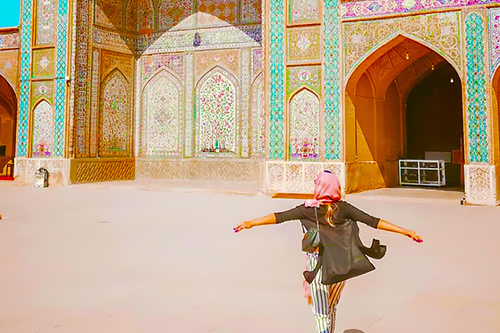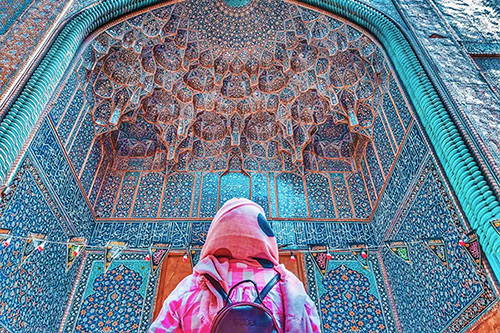 Signin with Google
Signin with Google Signin with Facebook
Signin with Facebook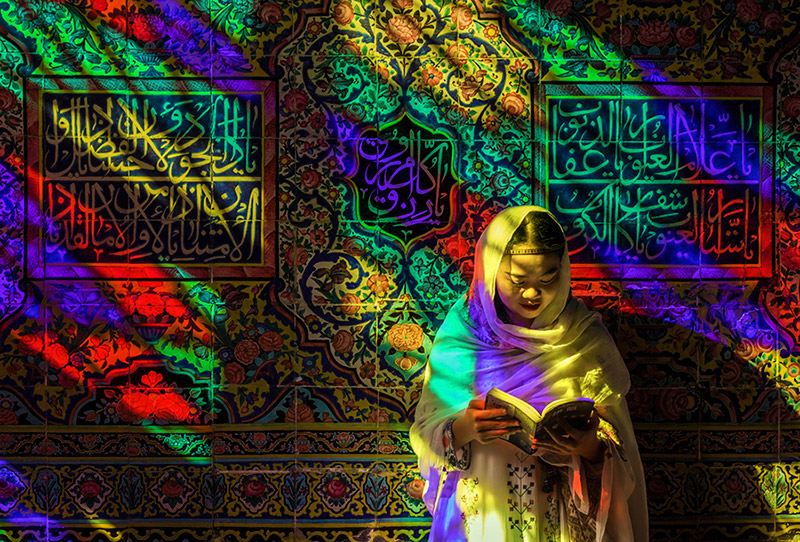 About Iran
About IranPersian Architecture
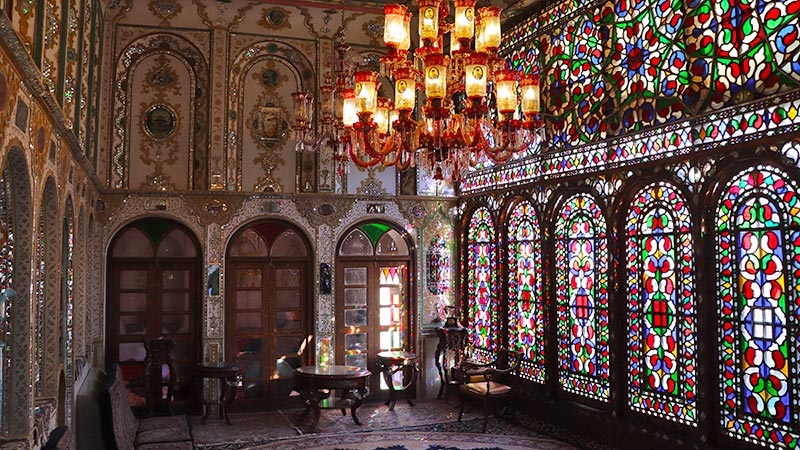
Iranian art and architecture is the result of more than 5000 years of history, spreading over the whole region and influenced by Islamic art. Between the 15th and 17th centuries, Persian architecture has reached its pinnacle, to become, as the renowned historian and archaeologist Arthur Pope said, "The supreme Iranian art". From the conception to the embellishment, it shows a genius that has given "some of the most majestic structures the world has ever seen". From Persepolis to the Shah Mosque, Persian architecture displays a great variety, which demonstrates its rich culture.

A Brief History of Persian Architecture
There are two different periods to be distinguished when we consider Persian art and architecture, separated by the Muslim conquest of Persia. The first era is the pre-Islamic architecture, as seen in the remains of Susa, Persepolis, or Taq-e Kasra. Ceramics and bronzes were the first significant discoveries to demonstrate the birth of Persian art, around 3500 BC. Strongly influenced by Mesopotamia, art was back then inspired by nature, displaying lots of animal motifs.

With the rise of the glorious Achaemenid Empire, a new style has emerged, favouring the construction of massive complexes such as palaces with columned audience halls, double staircases, and terraces. Greek and Egyptian architectures inspire this grand style. It can be best appreciated, for instance, in the palace of Cyrus in Pasagardea. Parthians and Sassanids have perpetuated this impressive style by adorning their palaces with massive statues, sculpted animals’ heads, and carved bas-reliefs. The Sassanids also introduced the stucco and mosaics decorations which are typical of Persian buildings up to now.
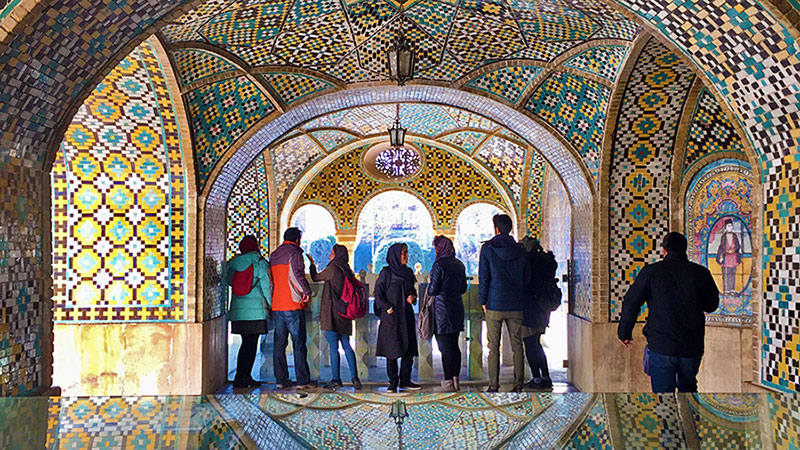
With the Arab invasion in the 7th century, Persian architecture has rapidly integrated into the elements of Islamic architecture, to make it such a unique style in the Islamic world. The Safavid Dynasty is held accountable for many of the masterpieces which emerged from that era. Arts and architecture developed the refinement we can now observe in the mosques of Iran. It includes stucco work, mirror works, mosaics, as well as calligraphy. In the 19th century, the Qajar Dynasty continued developing the delicate decorative arts such as paintings and stuccos, which can be admired in the Golestan Palace and traditional mansions of Kashan.

The critical elements of Persian architecture
Some characteristic features of Persian architecture make it recognizable at the first glance, such as domes, muqarnas, and Iwans. Not only they are delicate decorative elements, but also, they carry the symbol of the divine and often reflects Islamic beliefs. Visitors can see variations of these elements in most iconic sites of Iran.
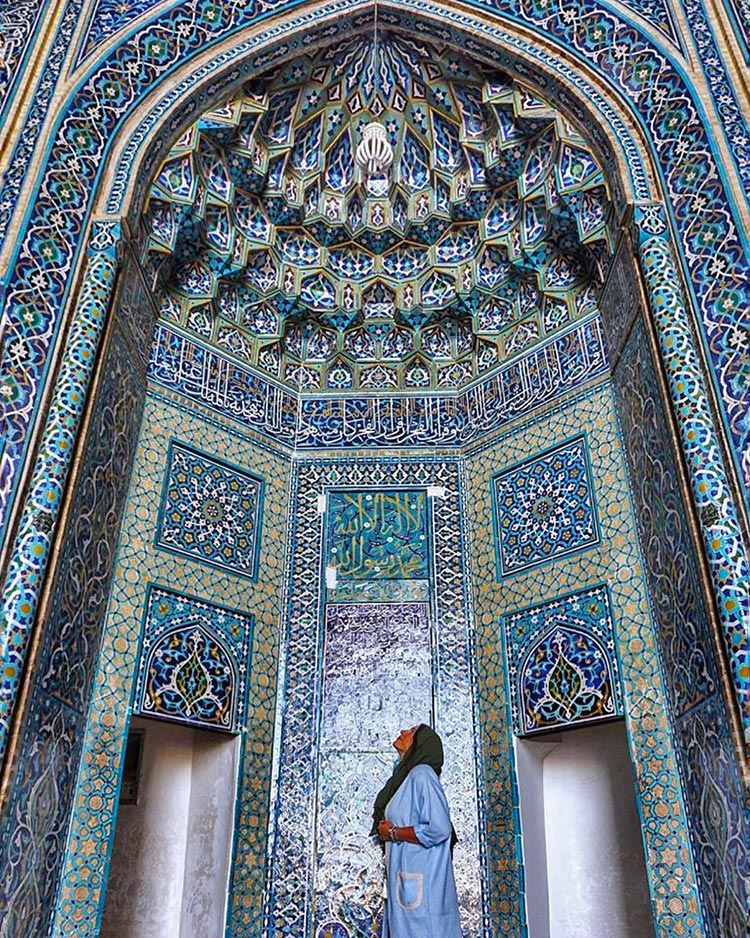
Persian domes
Building domes has started in the early history of Iran, back to the most original Mesopotamian architecture. Domes first had a practical usage, providing shadow in dry areas. They progressively acquired a symbolic meaning associated with the divine. Their pure circular shape is a representation of perfection and, thus, heaven.
Symmetry
Symmetry is a crucial feature of Persian architecture which carries a significant symbolic aspect. Iranian mosques are lavish of nominal geometry, using pure shapes such as circles and squares, overlapped and interlaced. Intricate geometric patterns are one of the main elements of mural decoration in mosques and are also applied to carpets, stained-glass windows, stucco decoration, woodwork, and metalwork.
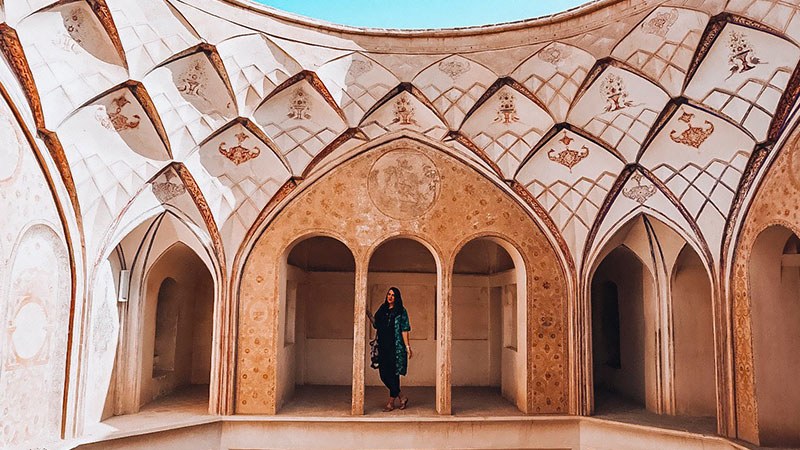
Iwans
Iwans are the monumental portals found in Iranian mosques and constructions. It's a vaulted space that opens on one side of the courtyard. It was first a structure from the monumental architecture of the Pre-Islamic era, before being introduced in religious buildings. The first example of such blending is the Sassanian-era Persian monument, known as the arch of Taq-I Kasra at the ancient city of Ctesiphon which later on in the Safavid era came to be represented in the Jameh Mosque of Isfahan, greatly embellished to become the UNESCO masterpiece to admire.
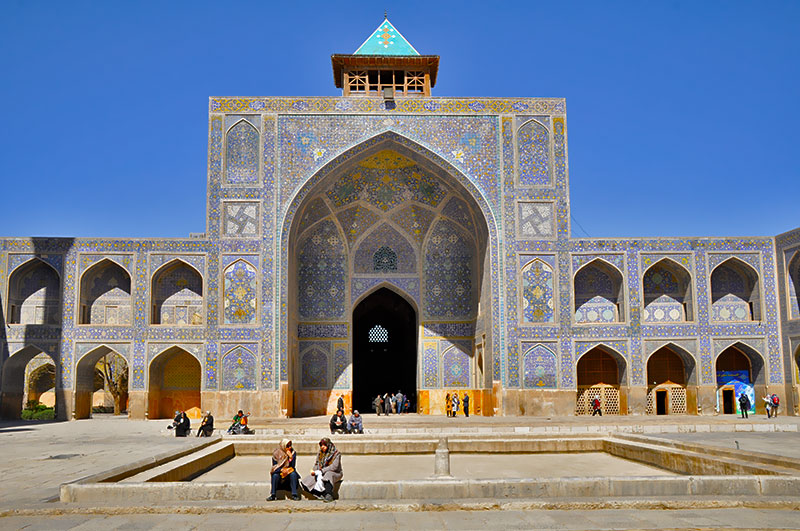
Muqarnas
Decorative muqarnas is one of the key elements of Persian art, seen under the domes, vaults, and iwans. They can be executed in stucco, tile, brick, wood, and stone. This type of ornamented vaultings has a strict aesthetic purpose, as it is a symbolic representation of the universal creation by God.
Gardens, fountain, and pools
Persian gardens are a significant part of Iranian art, listed by UNESCO as a World Heritage. It has influenced garden style in the world. It carries both an aesthetic and spiritual purpose, as it's the representation of the surrounded heaven on earth. Waters play a significant role in Persian gardens, which canals split the garden into four different parts connected by a central pool.
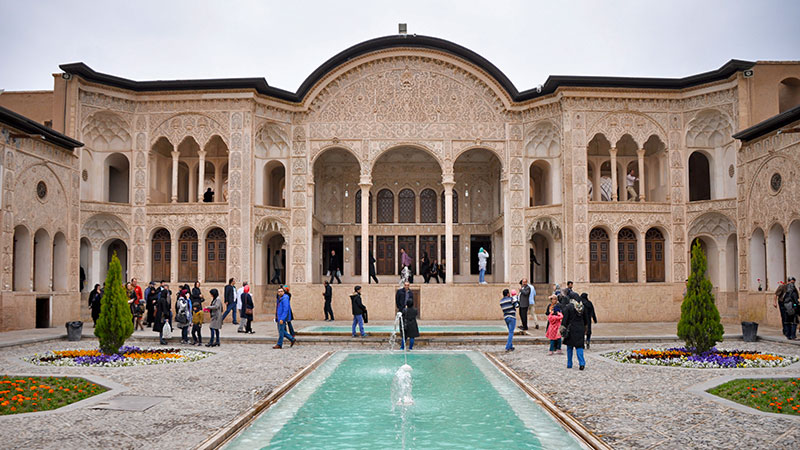
Calligraphy
Calligraphy is one of the essential Persian arts and has reached its pinnacle in Iran. It's the art of handwriting, which has been applied to decorative objects and structures all over Iran. They usually are scripts from the Quran or Persian poetry, written aesthetically. They embellished the walls of mosques as well as many typical handicrafts.
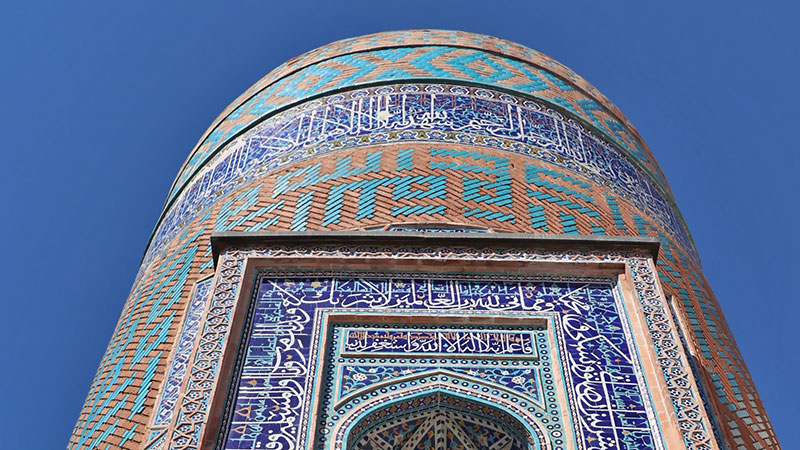
Mud-brick architecture
The Iranian Plateau that hosts this country has surrounded by two main orogenies to make a topography of bare desert lands in the centre that are enclosed by mountains and highlands. Since ancient times, natives of Iran employed architectural and engineering creativity according to the environment they live in. The earthen architecture of central Iran is compatible with the condition of the area; thus, it is significant as a national and world legacy. Adobe-brick buildings, and invented irrigation systems such as Qanats, the ancient cooling system of wind-catchers, etc. to present Persian architectural masterworks.

Iranian stained-glass
The light is one of the critical features of Iranian art and architecture. Architects have used the sacred notion of light to add more positive senses to the structures and buildings. It did not remain only in the concept but a feasible beauty that targeted the sights by blooming of the Iranian stained-glass technique. The god's light enters inside the buildings through the stained-glass windows implies as the eye drop. One of the best examples of this art is to be seen in Nasir ol-Molk Mosque in Shiraz.

Tile arts
Tile art is considered to bloom after the Islam period in Iran and came to its climax in the Safavid era and Qajar time. Tile work and ceramic is an inseparable part of Iranian architecture either in the mosque's dome embellishments or the ceiling of vaulted roofs of mansions. From painted tiles to the moaraq masterpieces, the technique of tile art dearly progressed in Iran.
Through symbolism and aesthetic beauty, Persian architecture and arts carry with them the essence of Persian culture. They also are a witness of the weight of history, from Susa to Persepolis and Naqsh-e Jahan's mosques, showing an evolution in style and beliefs over centuries.

